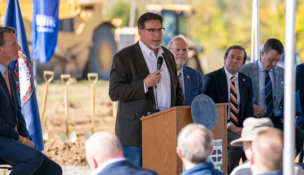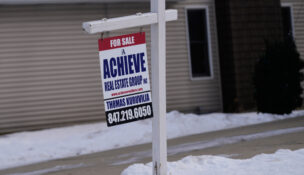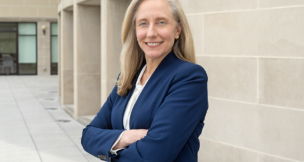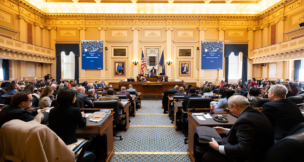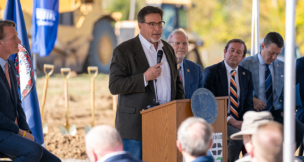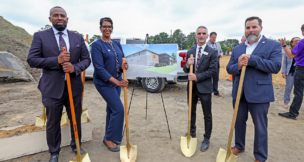Flood insurance costs rise with newer risk rating
The new rating uses a property’s structure, home value and location to determine rates
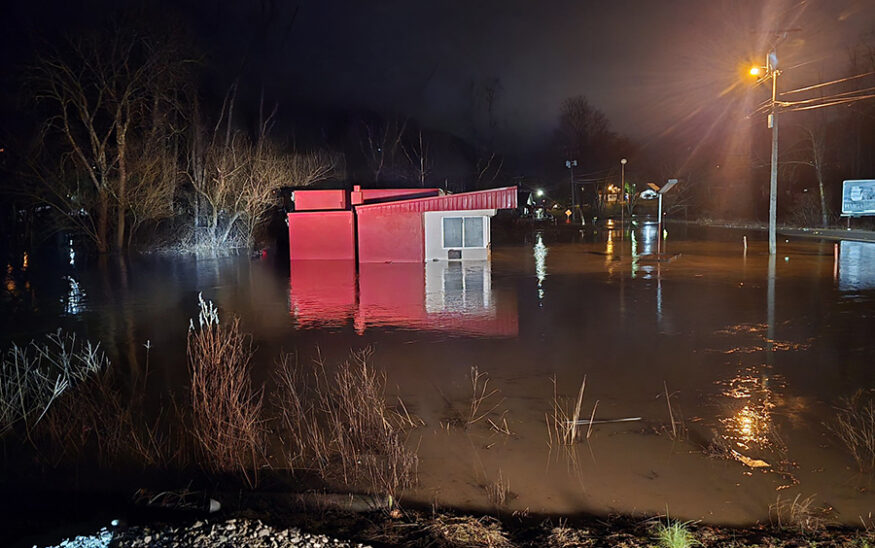
Valley Auto Spa was one of many buildings affected by Hurricane Helene in 2024. Photo courtesy Joshua Carroll.

Valley Auto Spa was one of many buildings affected by Hurricane Helene in 2024. Photo courtesy Joshua Carroll.
Flood insurance costs rise with newer risk rating
The new rating uses a property’s structure, home value and location to determine rates
SUMMARY:
- Change to rating standard for National Flood Insurance Program in 2021
- Critics think it drove up prices
- Lawsuit challenged rising flood insurance rates but was dismissed
- Virginians will see a 45% increase in flood insurance rates
Joshua Carroll owns Valley Auto Spa in Big Stone Gap, one of the many businesses and homes in Southwest Virginia impacted by Hurricane Helene.
The storm was Category 4 when it hit the Florida coast and blew north, causing at least $800 million in damages in seven states, according to a recent Federal Emergency Management Agency report.
“Before I knew it, it was about a foot deep,” Carroll said. “And then the foot turned into two, and two turned into three in some places, and I got all of the stuff I could out before we had to leave.”
Carroll traveled to Asheville, North Carolina to help victims after seeing social media posts about extensive flood damage. His first interaction was with an elderly couple whose generator was stolen, and the woman left without electricity for her oxygen supply, he said. He helped get her a new generator through a church.
“This place was decimated,” Carroll said.
The damage was so extreme in Asheville that Carroll shut down his business for a month to go help more affected victims. Flood insurance is an important safety net, but only three percent of Virginia homeowners have it, according to the state’s Department of Conservation and Recreation, or DCR. Federal changes to the evaluation parameters of flood insurance could make it more expensive, and at a time when a growing number of housing units are at risk of flooding.
FEMA manages the National Flood Insurance Program, or NFIP, which supplies flood insurance to the public and businesses through a network of insurance providers. The agency began implementing a rating standard known as Risk Rating 2.0 in October 2021, and completed its implementation in April 2023.
Risk Rating 2.0
The previous system relied on measurements of elevation within flood zones to determine rates, according to FEMA. The new rating uses a property’s structure, home value and location to determine rates. The new rate uses “industry best practices” and “cutting-edge technology” to better determine rates for flooding insurance, with FEMA saying it has decades more information to utilize.
The new rating intended to more appropriately spread the risk across purchasers of the policies, according to planning director Sarah Stewart with the regional planning commission Plan RVA. It factors in how a larger, very costly home may have a higher burden to pay than a smaller, less costly home.
“It was an attempt to better factor that in, to better share the risk across policies,” Stewart said.
Virginia residents can join the Community Rating System through NFIP to help reduce the cost burden on policyholders, according to Stewart.
Communities that implement flood protection policies beyond minimum NFIP participation requirements get “points” which can improve the rating and help with policy discounts. Examples of activities include citizen-education programs, preserving open space in the floodplain, requiring higher construction standards and enforcing stormwater regulations, according to DCR.
Critics think the new rating failed to show how it would reduce premiums, and that it drove up prices.
“It didn’t sufficiently reward proactive protection,” Carroll said. “I watched it destabilize entire neighborhoods because everything became extremely unaffordable, even more unaffordable than it already was.”
Virginia Attorney General Jason Miyares, along with other state attorney generals agree. Miyares in 2023 joined Louisiana v. Mayorkas, a lawsuit that states FEMA is no longer living up to its promise of affordable insurance if states, local governments and citizens undertook “expensive flood mitigation projects.”
Policyholder premiums “are dramatically increasing,” by 1,000% in some areas, the lawsuit stated. Additionally, the new policy method disrupts the housing market and drives up prices.
The court dismissed the lawsuit in November last year, two months after Helene struck. The court acknowledged potential mitigation costs for states, but did not think there was enough evidence to prove the claim.
“Everyone I spoke to seemed to have experienced a large increase in their flood insurance,” Carroll said.
The increase was sometimes up to 15% higher, which doesn’t help people who need insurance, Carroll said. Nor does a “one-size-fits-all” approach.
“There’s so much fine print, there’s nothing that’s just cut and dry anymore,” Carroll said. “You’ll try to file a claim and they’ll be like, ‘on page 300, section four, sub code B, we can’t cover this.’”
Cost of Flood Protection
Virginia residents will see a 45% increase in flood insurance rates with the new method, according to the insurance broker Policygenius. The average cost is $743 annually, and could rise to an average of $1,077. Virginia’s housing count was 3.7 million in 2023, according to the U.S. Census. Over 28% of homes in the state could face some level of flood risk in the next 30 years, according to a 2020 First Street Foundation report. The organization studies flood risks across the U.S.
Flood risk is especially heightened in the Virginia Beach area, where sea level rise could help drive a 60% increase in flood vulnerability over the next 30 years, according to First Street.
Local leaders have worked to address and mitigate flood risks, although a $20 million Environment Protection Act grant to help a Hampton neighborhood be more flood resilient could be canceled as part of the federal government efforts.
Community Support After returning from helping in Asheville, Carroll received help from the Savage Freedoms Relief Organization and the Love Thy Neighbor organizations. Eight car loads of people showed up to rebuild his business.
“I had people come from my community and pressure wash the building out and in the blink of an eye, I was once again reminded how incredible the Appalachian culture is and the Appalachian people are,” Carroll said.
Carroll has no regrets about the days spent helping others, working on logistics and collecting donation money.
“I just really wanted to continue to help and prepare for whatever disaster may come next,” he said.
Capital News Service is a program of Virginia Commonwealth University’s Robertson School of Media and Culture.



